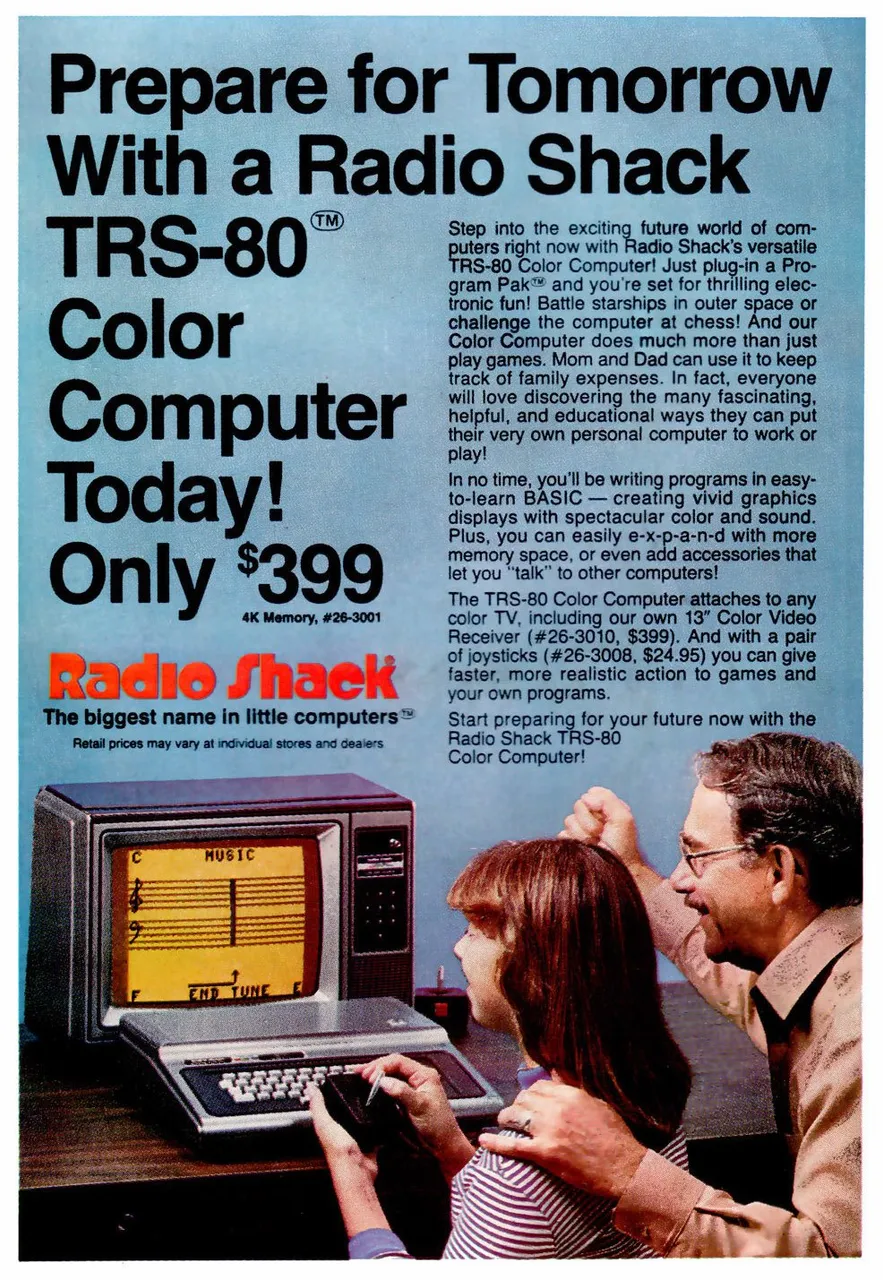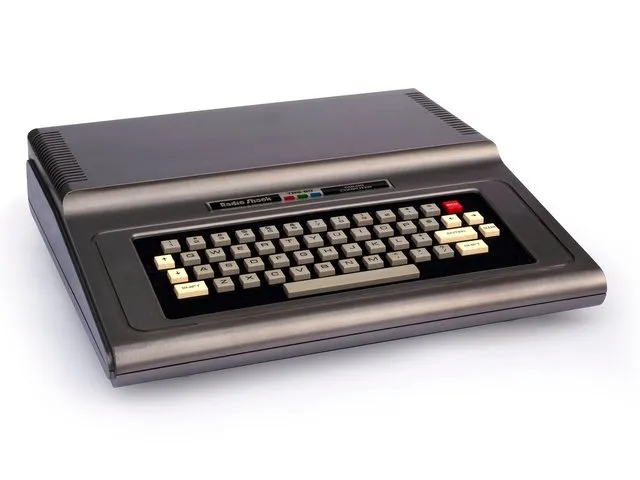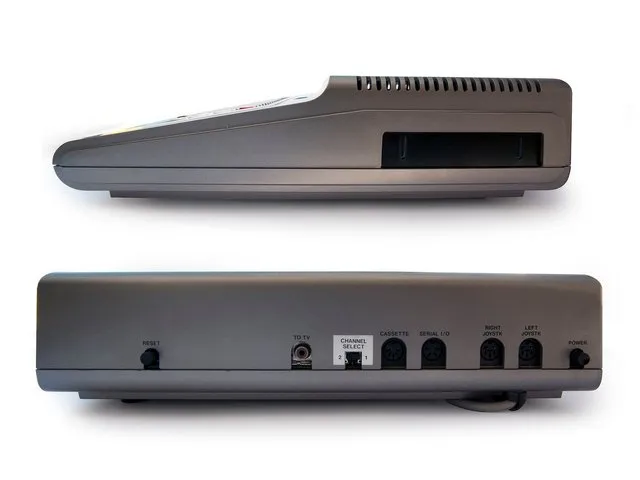

The Color Computer eventually dropped the TRS-80 designation and computers in that line became to be colloquially known as the CoCo, CoCo 2 and CoCo 3. Here we have an ad for the original TRS-80 Color Computer from way back in 1981. Radio Shack had a surprise hit with their TRS-80 Model I but it couldn't do color like the Atari, VIC-20 and Apple II so they introduced the Color Computer.

The Color Computer's main competition in the home market was probably the VIC-20. They were both introduced around the same time and were relatively inexpensive compared to most other computers on the market at the time. Despite the VIC-20's less capable CPU, it's cheaper price, slightly more RAM, more advanced video hardware and Commodore's decision to put games on cartridges, the VIC-20 beat out the Color Computer in the marketplace. The Color Computer had cartridges too (Program Paks) but third party support was much weaker.

Having said that, the Color Computer was pretty advanced for its time, particularly in regards to the CPU. The Color Computer used a Motorola 6809E processor. This was still an 8-bit processor but had some 16-bit features. However, despite the advanced processor, the lack of dedicated specialized graphics and sound hardware made the CoCo less capable when it came to games which were a big sales driver for early home computers. The chiclet keyboard probably didn't help.
The CoCo originally shipped with 4K of RAM and was designed to work with a color television. It was also designed to load and store programs on cassette though a disk drive was available later. The original CoCo was replaced by the CoCo 2 in 1983 (in 16K or 64K varieties) which was functionally identical and then by the CoCo 3 in 1986 which remained mostly compatible but offered some enhancements, including 128K of RAM, composite and RGB output, a slightly faster CPU and improved graphics modes among others.
Read more: https://www.megalextoria.com/wordpress/index.php/2017/08/02/trs-80-color-computer-1981/